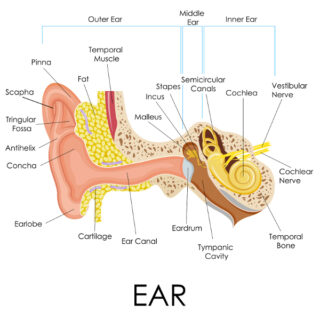How Do We Hear?
The anatomy of the ear is precisely shaped to capture sound waves and amplify them. When sound waves enter the ear, they follow what might seem like a long and arduous path. But every ‘station’ has a precise function. This is how it works:
- Sound waves are picked up by the outer ear, which is made up of the pinna and the ear canal.
- Sound is channeled to the eardrum [tympanic membrane], which vibrates when the sound waves touch it.
- The vibrations are picked up by the three tiny bones known as the malleus, incus and stapes [hammer, anvil and stirrup], which create a bridge from the eardrum to the inner ear.
- The vibrations move on to the cochlea – a spiral-shaped capsule housing a system of fluid-filled tubes.
- When the sound waves reach the fluid it begins to move, setting thousands of tiny hair cells in motion.
- The movements of the hair cells are transformed into electric impulses that travel along the auditory nerve to the brain itself.
- The brain decodes and interprets the electronic impulses, turning a stream of speech sounds into separate, recognizable words.
Source: “Your Hearing Illuminated: Understanding Your Hearing Evaluation” (Oticon, 2009).
Having knowledge about how we hear will enable us to have a better understanding of why it is important and what may be going on when experiencing a loss of hearing on some level.
If you have any questions about hearing or hearing loss, please feel free to contact our ENT doctors in Arlington, Dallas and Fort Worth today. Our friendly staff is in place to answer all of your questions regarding your hearing and other issues related to the ears, neck, and throat.

